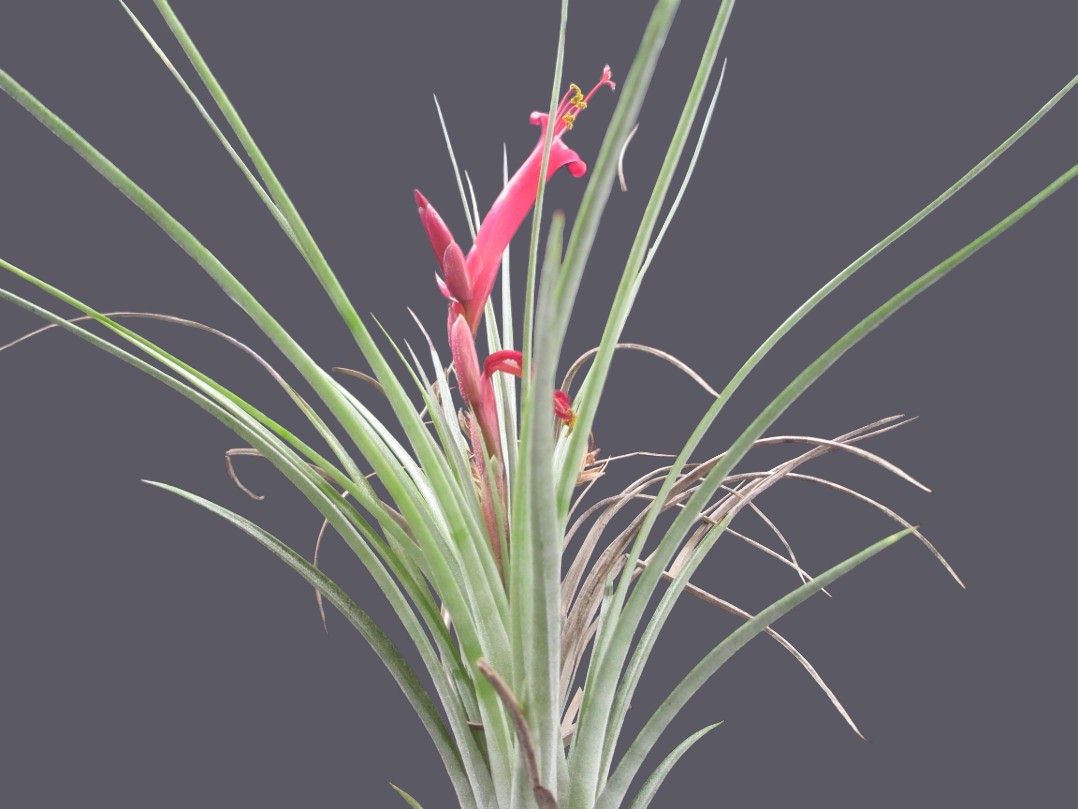
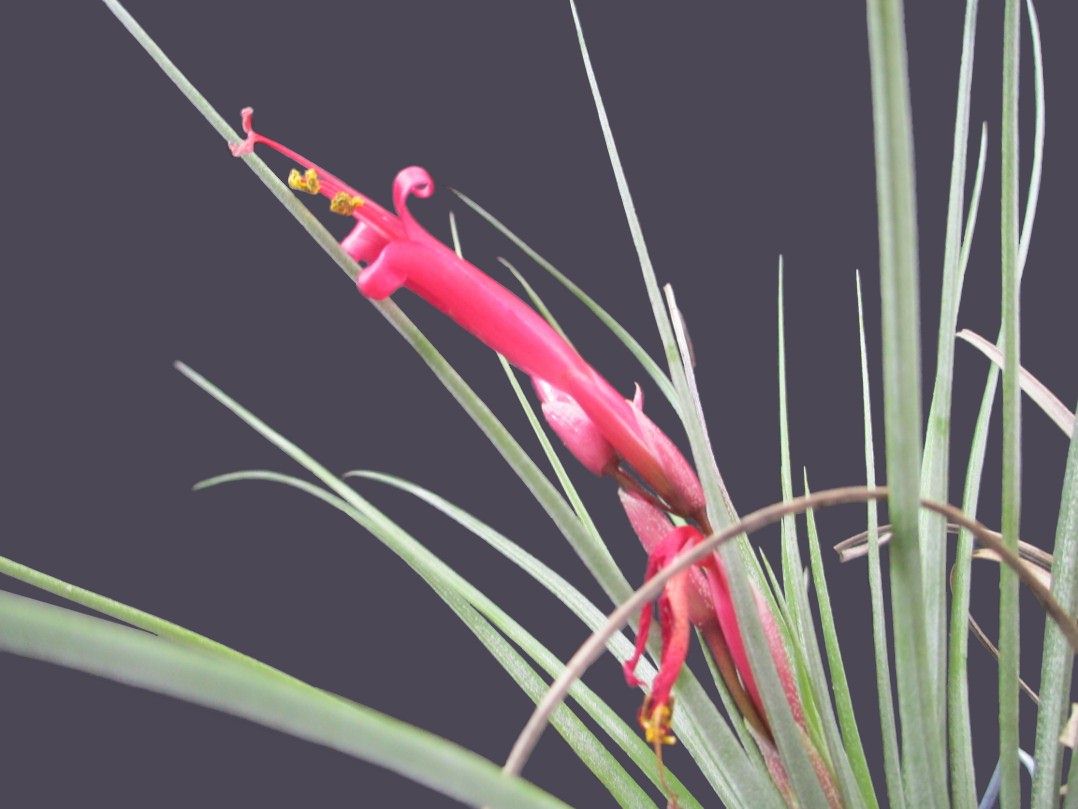
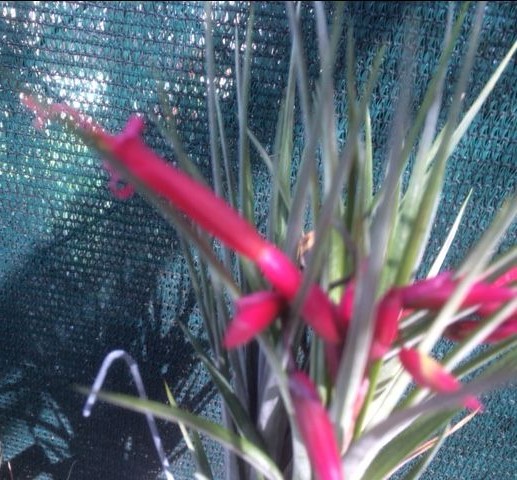


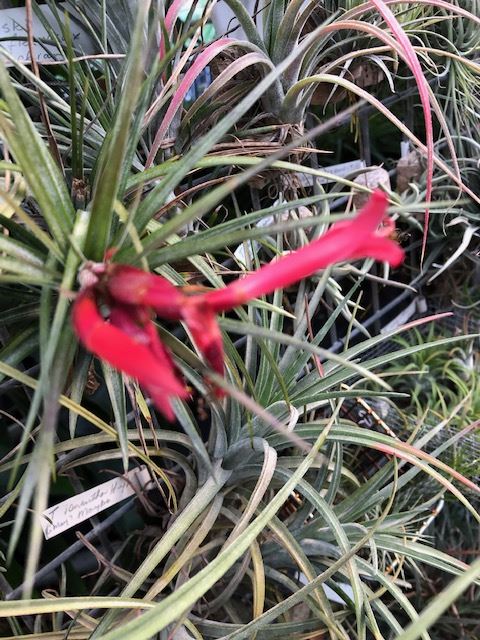

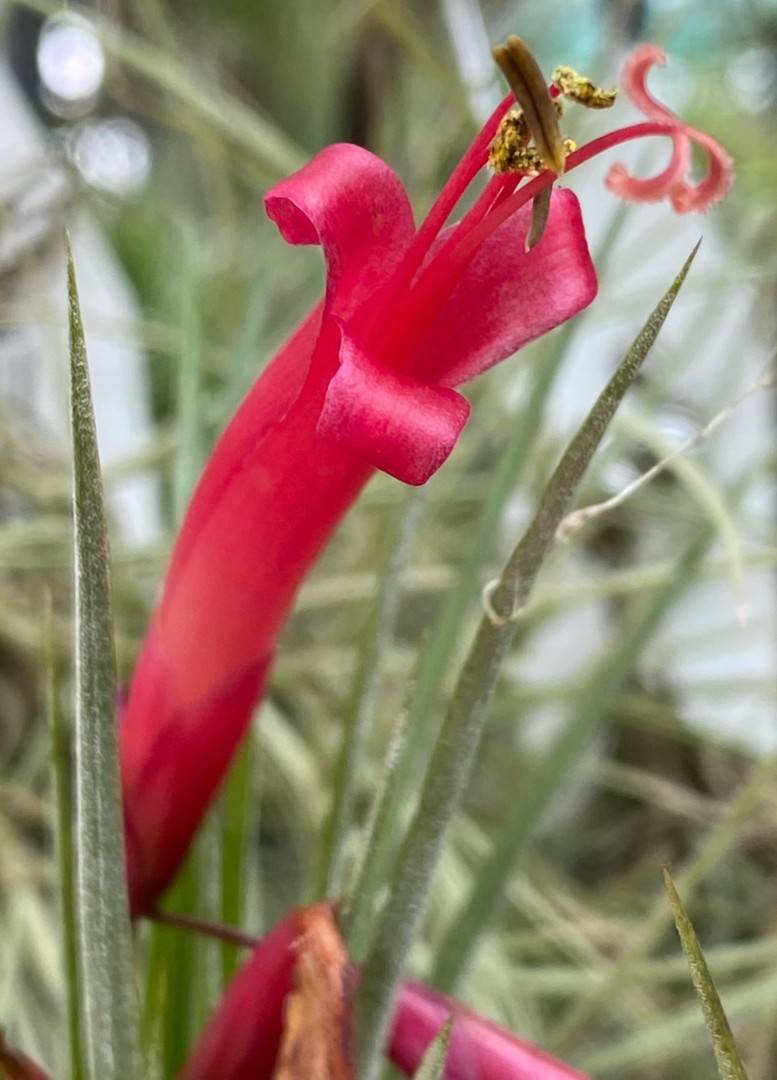
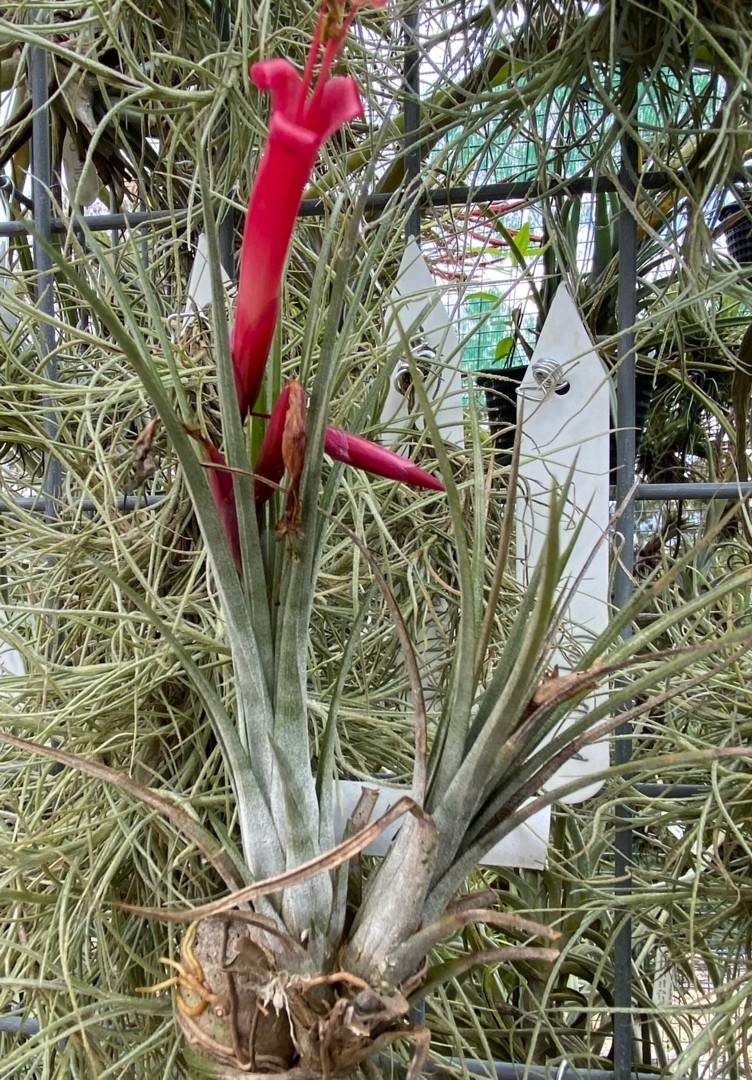
Planta breviter caulescens foliis numerosis, inflorescentia breviter exserta. Folia 15-16 cm longa vaginis non inflatis intus indumento pallide brunneo praeditis, laminis c. 14cm longis et 1-1.4cm latis. Inflorescentia (cum pedunculo) 7.5-20cm longa. Pedunculus brevis bracteis foliisque fere omnino obtectus. Bracteae florigerae ovatae. Flores breviter pedicellati, sepalis oblongis, petalis 4.3-5cm longis, antheris 5.5mm longis.
Typus: Fue localizada a orillas de la carretera El Vigia - Merida aproximadamente a 10.5kms. antes de llegar a la poblacion Los Estanques, recolectada directamente del suelo, Leg. A. Wilinski Jeanmonod s.n. 1997?; La vegetacion y clima predominante en el lugar corresponden al tipo bosque seco pre-montano (holotypus, U; isotypus VEN).
Plant short caulescent, 20-25cm tall, flowering slightly taller, dense, with very many leaves, cinereous-green.
Stem much shorter than the leaves, ca. 5cm long, ca. 1cm in diameter, for about the half covered by leaves.
Leaves coriaceous, ca. 16cm long, much shorter than the inflorescence.
Sheaths ample, adaxially contrasting with the blade only in color, ovate, not inflated, 1.7-2.5cm long, 1.6-1.8(-20)cm wide (the very base widened), with membranaceous margins, very densely lepidote, on both sides, with spreading, brown and dark centered scales (adaxially), pale brown.
Blades first erect and then arching or recurving, channeled, very narrowly triangular, ca. 14cm long, ca. 1cm wide at the very base, attenuate, sub-pungent, very densely lepidote, on both sides, with spreading, whitish scales.
Inflorescence simple (but sometimes with one branch at base ), 10-18cm long.
Peduncle wholly covered by bracts or partly exposed above, erect, 6-10cm long, 2.5mm in diameter, sparsely lepidote.
Scape bracts erect, imbricate, rigid-chartaceous, the lower ones long caudate and the upper acuminate or acute, exceeding the internodes, densely lepidote.
Racemes sub-erect, laxly and distichously 3-5 flowered, elongate, 6-9mm long, (with a very small undeveloped flower at apex).
Rachis wholly exposed, slender, strongly flexuous or geniculate, concave and acute angled, sparsely lepidote, green.
Floral-bracts divergent with the flowers (caused by geniculate rachis), remote, thin coriaceous, even and prominently nerved when dry, ecarinate or slightly carinate toward the apex, ovate, sub-acute, nearly straight, 1.3-2.4cm long, 0.9-1.3cm wide, slightly exceeding the internodes, much shorter than the sepals (especially in upper flowers), with thin margins, outside sub densely lepidote to sparsely lepidote, greenish.
Flowers divergent, short pedicellate (if at all). Pedicel 2-3mm long.
Sepals subcoriaceous, even or distinctly nerved when dry, oblong, obtuse, nearly straight or incurved at the extreme apex, 1.8-2.3cm long, 0.8cm wide, with hyaline margins, posterior and anterior ones all alike and ecarinate, ecarinate (but thickened in center at base), free, glabrous, only outside, green tinged with pinkish-red.
Petals thin, with the blade spreading to re curving at the apex only (coiled), linear-lanceolate, with ovate-lanceolate blade, acute, 4.3cm long, 0.7cm wide, pinkish-red.
Stamens exserted.
Filaments stout and (sub-) terete for most of their length, unequal (three longer) in length, 4.2-4.6cm long, upper part red.
Anthers dorsi-fixed at 2/5, linear-sagittate, 5.5mm long.
Pollen yellow.
Pistil about equaling (in between shorter and longer 3) the stamens.
Ovary ovoid, 5mm long, tapering into the style.
Style elongate, many times as long as the ovary.
Stigmas linear, spreading and coiled, red with hyaline papillae.
General notes
This natural hybrid has been found in only one location, growing together with Tillandsia flexuosa Swartz and T. funckiana Baker, two species with slightly zygomorphic red flowers. T. X wilinskii has to be considered a natural hybrid of these two species and shows many intermediate characteristics between the two. This new natural hybrid is named in honor to Albert Wilinski Jeanmonod (Ingeniero Agronomo), who discovered this plant at the type location.